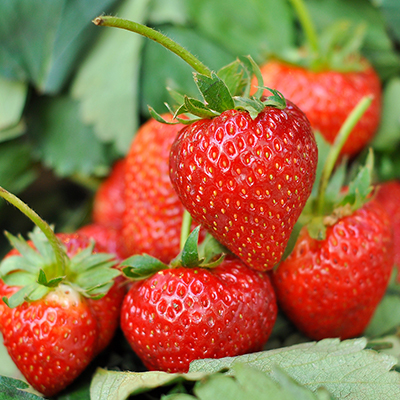How to Grow a Lemon Tree in a Pot

Last updated April 7, 2025
If you experience cooler weather during the fall and winter months, growing a potted lemon tree indoors is a great way to sustain the plant all year long. Since these trees are self-pollinating, only one is needed to produce fruit. This guide will explain how to grow a lemon tree in a pot using a pre-planted patio lemon tree.
Difficulty:
Beginner
Duration:
Over 1 day
Table of Contents
Choose a Planter
Transplant the Lemon Tree
Fertilize, Water and Care for Your Lemon Tree
Bring the Lemon Tree Indoors
Lemon Tree Care Tips
Growing Dwarf Citrus Indoors
Choose a Planter

You’ll first need to choose a planter large enough to accommodate your growing lemon tree.
- Barrel planters, grow bags and large flower pots are great options, as they provide ample room for the roots to expand and thrive.
- When the tree is potted, there should be at least an inch of room between the soil and the top of the planter or flower pot. Do a “test fit” by setting the plant in its original pot and into the container you plan to use.
- 8 to 12 inches is the recommended diameter, and the planter should also provide proper drainage for the soil.
Transplant the Lemon Tree

Repot the lemon tree by taking it out of the temporary casing and adding it to your planter.
- Carefully tilt the tree and remove it from the original container. Tap the sides and bottom of the pot to loosen the tree.
- Gently untangle the tree roots if they have formed a tight root ball. Go slowly, being careful not to damage the roots upon transfer.
- Put some garden soil in the transfer pot, add the tree, and then add enough gardening soil to fill the planter, leaving 1 to 2 inches at the top.
- Firm the soil gently with your fingers. Make sure it’s tightly packed so the roots can establish.
- Make sure the graft union (the point where the dwarf rootstock was grafted onto the regular-sized plant) stays above the soil.
Fertilize, Water and Care for Your Lemon Tree

- Water the soil and add a quality plant food or fertilizer to help prevent transplant shock and stimulate growth.
- Add enough water to cover the surface and be sure not to oversaturate the soil.
Tip: Citrus plants need high-nitrogen fertilizer. Purchase a quality plant food or fertilizer that is formulated for citrus. Follow the package directions for mixing and recommended feeding schedules.
Bring the Lemon Tree Indoors

During the warmer months, the lemon tree can remain outside and in full sun. Citrus plants need 8 to 12 hours of sunlight a day.
- As temperatures begin to cool, bring the tree inside and place it in bright, sunny spot that faces south or west.
- Keep your lemon tree away from any heating vents.
- Supplement sunshine with grow lights. Make a mobile grow light stand if you lack space for a permanent set up.
- Prune the lemon tree regularly and remove new growth that begins to stem near the soil.
Lemon Tree Care Tips

- Continue watering the tree regularly once you move it indoors.
- If needed, use a water meter to measure moisture levels, and add decorative pebbles around the soil to help reduce evaporation.
- Mist the leaves daily during the winter to keep the foliage fresh.
- Use non-toxic, organic treatments to deter pests like spider mites.
Growing Dwarf Citrus Indoors

Other citrus, such as oranges, limes and tangerines, often have dwarf varieties that can be grown indoors. Follow the same planting and care instructions as for lemon. Oranges need about a year to produce mature fruit, while lemons and limes are ready to harvest in 6 to 9 months after blooming, you will know the fruits are ready when they feel heavy, and the color becomes darker. Harvest the fruits as they ripen and become slightly soft.
Tips for Gardeners in Northern Climates:
- Many citrus varieties can tolerate temperatures as low as 32 degrees Fahrenheit for a couple of hours, but to be on the safe side, bring trees that spend the summer outdoors back indoors before the first frost. It’s a good idea to gradually acclimate them to the change they’ll have in temperature, light and humidity by first moving them onto a porch or other sheltered area for a week or two.
Tips for Gardeners Outside the Traditional “Citrus Zone”:
- Most commercial citrus is grown from California into Texas, Arizona, and along the gulf coast into Florida but backyard gardeners sometimes have a microclimate that lets them grow the trees successfully in their own yards a hillside. A hillside that gets a lot of sunlight for example, or a sheltered warm spot near a building may give you a growing spot that you wouldn’t find on an ordinary climate map. How can you know if a citrus will grow in your area? Find a variety you like and then read the plant tag or research it online to see how much cold it can take
For Gardeners Who Cook:
- When your fruit is ready to harvest, squeeze limes, lemons and oranges for delicious drinks or use the juice and zest to flavor pies, desserts, baked goods and other dishes. If you’re a cook, who likes to make jams and jellies, turn some of your fruit into homemade goodies to give as gifts next Christmas.
Read on for a recipe to get you started using your fresh dwarf lemons.
Recipe: Grilled Chicken Breasts with Rosemary and Lemon

Lemon has hundreds of uses in the kitchen. As the acid in salad dressings or marinades, it hits the right notes you need to finish a dish. Use your homegrown lemons in this marinated, grilled chicken recipe.
Lemon-Rosemary Chicken Breasts Recipe
Grilled boneless, skinless chicken breasts are so satisfying and easy to master. A simple marinade, such as this one, deeply flavors and tenderizes the breast meat, making a longer marinating time worthwhile, so plan accordingly. Serve as an entrée with side dishes or slice the breasts and top a salad for a summertime meal.
Serves: 4
Prep time: 15 minutes
Marinating time: 2 to 4 hours
Grilling time: 8 to 12 minutes (grilling guide for boneless, skinless chicken breast halves)
Ingredients:
- 5 tablespoons extra-virgin olive oil
- 1 tablespoon fresh lemon juice
- 1 tablespoon minced fresh rosemary leaves (from about 4 sprigs)
- 2 garlic cloves, minced
- 1 teaspoon kosher salt
- 3/4 teaspoon freshly ground black pepper
- 4 boneless, skinless chicken breast halves, each 6 to 8 ounces, trimmed of fat
Directions:
- Whisk the marinade ingredients. Place the chicken breasts in a large, resealable plastic bag and pour in the marinade. Press the air out of the bag and seal tightly. Turn the bag to distribute the marinade, place in a bowl and refrigerate for 2 to 4 hours, turning the bag occasionally.
- Remove the chicken breasts from the refrigerator 20 minutes before grilling.
- Prepare the grill for direct cooking over medium heat (350 to 450 degrees Fahrenheit).
- Brush the cooking grates clean. Remove the chicken from the bag and discard the marinade.
- Grill the chicken, smooth (skin) side down first, over direct medium heat, with the lid closed, until firm to the touch and opaque all the way to the center, 8 to 12 minutes, turning once. Remove from the grill and let rest for 3 to 5 minutes. Serve warm.
Whether you need the right planters, plants or potting soil, The Home Depot delivers
online orders when and where you need them.



























